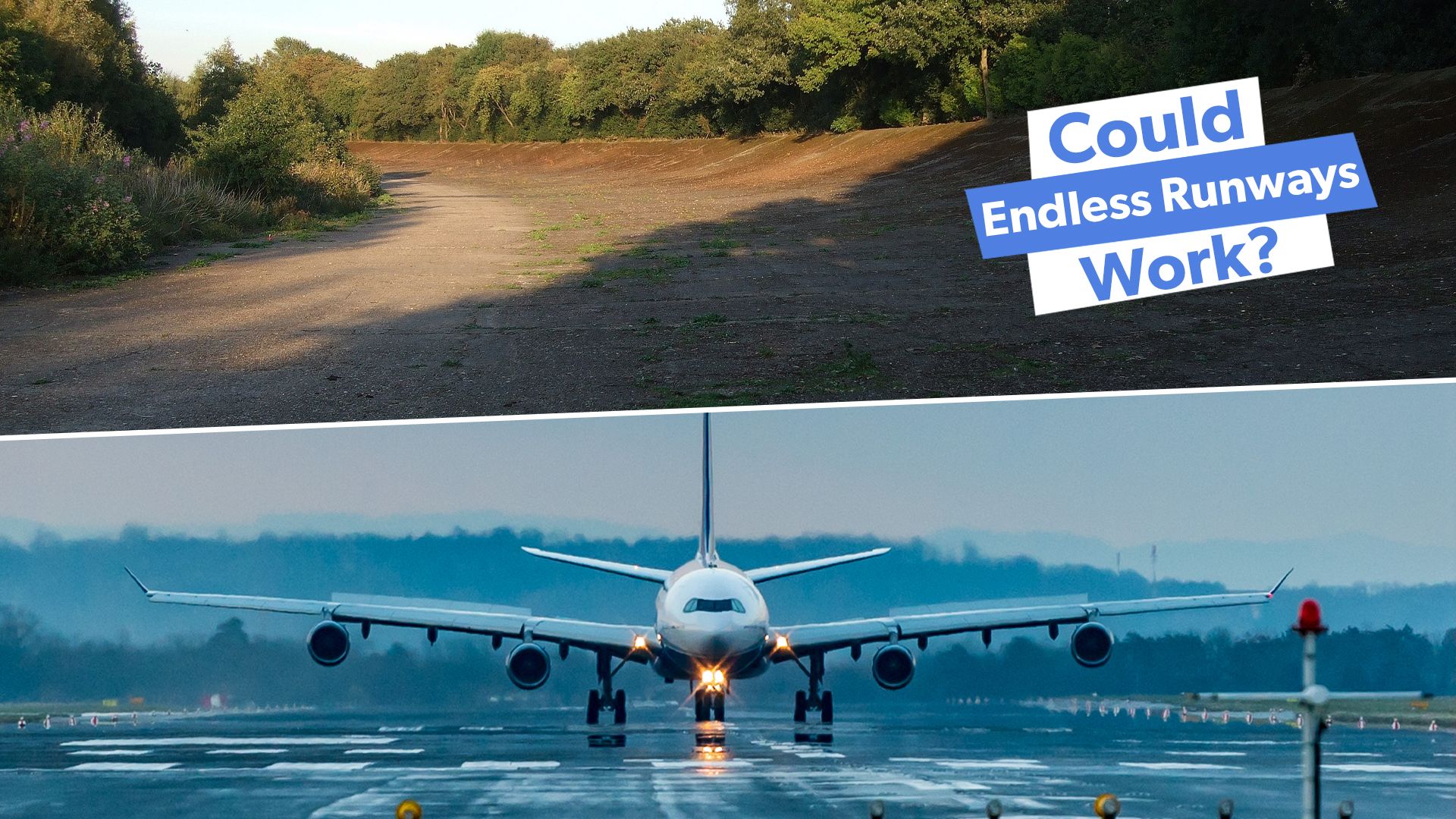Summary
- The circular runway concept proposed in 2017 by Dutch scientists aimed to counter crosswinds, reduce emissions, and decrease queueing times.
- The circular runway design would allow multiple aircraft to land and take off simultaneously, shortening taxing and waiting times for flights.
- Despite potential benefits, the circular runway faces feasibility challenges, including cost, safety concerns, and operational complexities.
In 2017, the internet was abuzz with suggestions by Dutch scientists from the Netherlands Aerospace Centre (NLR) about the attention-grabbing concept of “circular” or “endless” airport runways. The endless runway was suggested as a way to help reduce cross winds as the aircraft would always be able to fly into the wind and have other benefits. Since then, there hasn’t been much reporting or follow-up studies on the concept, suggesting it is not being seriously considered. Instead, all-new airports proposed around the world are traditionally designed (like the major new airport for Vietnam’s Ha Noi).
The concept of circular runways
Henk Hesselink, the Senior R&D Manager at the Netherlands Aerospace Centre, claimed the circular runway would allow aircraft to take off and land in a circular pattern, with multiple aircraft simultaneously entering and exiting the circle. The conceptual length of the runway is over 6.25 miles (10 km) with a diameter of 2.2 miles (3.5 km).
The sides of the runway were designed to be banked (similar to corners on a road). The aircraft would only need to use around a quarter of the runway for landing, which would mean aircraft wouldn’t need to queue up to take off. Such a design would also shorten taxing times.
|
Endless runway suggestion |
|
|---|---|
|
Concept studied: |
2010s (debated in 2017) |
|
Lead proponent: |
Henk Hesselink of NLR |
|
Diameter: |
2.2 miles |
|
Length: |
Approx. 3.25 miles |
|
Capacity: |
3 aircraft simultaneously |
He argued that up to three aircraft could take off and land simultaneously while providing sufficient safety margins. Another supposed benefit included fairly distributing noise over the area (as aircraft would be able to approach from any direction). Hesselink also claimed the design would enable the industry to reduce emissions (e.g., it would reduce the amount of aircraft that would need to fly around the airport waiting to land). Adverse weather would only result in the partial closure of the airport.
With a large circle, the aircraft can enter and exit in any direction at a safe distance. The diameter of the circular runway is such that passengers would not feel the effect of high-speed circular movements – although they would feel some turning.
“Passengers during take-off or landing will not feel like they are on a roller coaster.” – Henk Hesselink, Senior R&D Manager.
A typical takeoff or landing only requires a part of the circular runway with a little curve. This design was claimed to be able to eliminate the issues with current bidirectional runways that pose significant challenges during inclement weather. The circular design allows approaching aircraft to avoid crosswinds. When the aircraft has landed and decelerated, it would move off to the high-speed taxiway toward the terminal, in the center of the circle.
Is the design feasible?
Building and maintaining the infrastructure would be very costly. Large airports already established with several runways cannot rebuild a massive new infrastructure around a circular runway. It would never be financially viable for existing airports since the increased capacity wouldn’t cover the cost of the new infrastructure. Moreover, enormous tunnels and bridges will be required to move ground vehicles in and out of the terminal.
Photo: motive56 | Shutterstock
Landing at a bank angle can be challenging in different weather conditions. There is always a risk of insufficient wing clearance on the runway. Moreover, the turn must also be supported by the landing gears or control surfaces that change the aircraft’s direction as it moves down the circular runway.
Claimed benefits of the circular runway:
- Countering crosswinds
- Being resistant to adverse weather closure
- Reducing the time airplanes fly around airports
- Reducing taxi times
- Reducing queuing times
- Reducing emissions from more efficient operations
Moreover, circular runways with multiple entry and exit points pose chances of collision. This is because aircraft of different speeds could create conflict zones. While the idea of finding a point with no crosswind is exciting, aircraft are likely to face crosswind at some point during landing. This not only defeats the purpose but also incurs downwind challenges.
Challenges with the design
The idea was tested by the Air Force in the 1960s but abandoned due to economic, physical, and logistical challenges associated with the design. While more recent simulations run by the Netherlands and the UK show some long-term benefits, potential challenges with catastrophic runway contamination are significant. In short, many engineers have looked at it and said it doesn’t work – not even for the core reason suggested in the first place (windy weather).
Real Engineering stated, “The circular runway would not only be a nightmare for air traffic controllers trying to direct airplanes and make it even more difficult to land and take off, but it would also only be useful in calm weather with no wind dictating takeoff directions.” The channel then added that these are the sorts of issues only found when engineers carefully analyze a problem.
Photo: Guido Benedetto l Shutterstock
Routing aircraft of varying speeds to the runway can be more challenging than expected. Above all, the anticipated multi-trillion dollar expenditure on the large-scale implementation will be difficult for many to swallow. Until a significant breakthrough is seen in the design, it is deemed as a crazy idea for now.
What are your thoughts on the circular runway design and its feasibility in commercial aviation? Tell us in the comments section.



